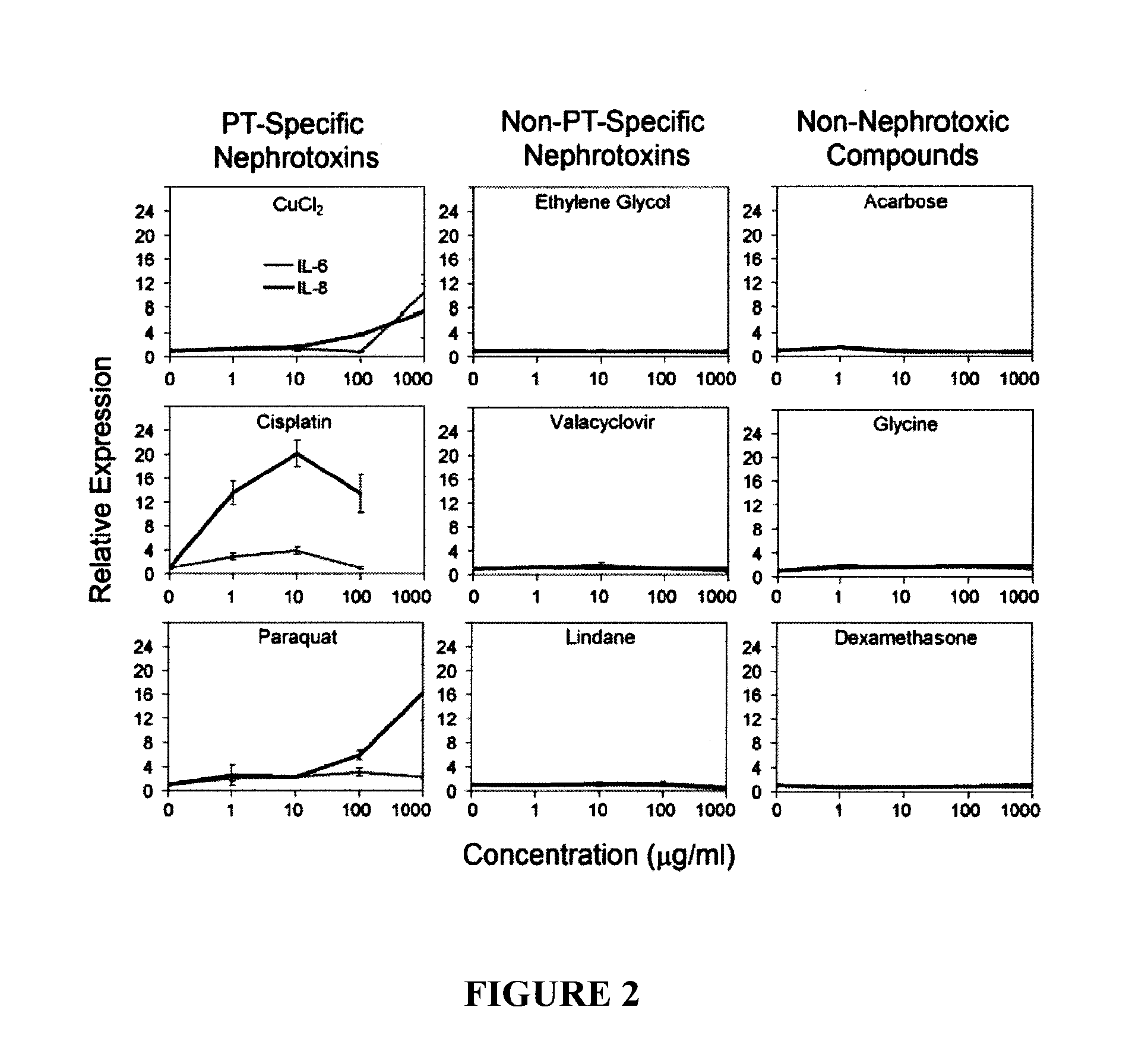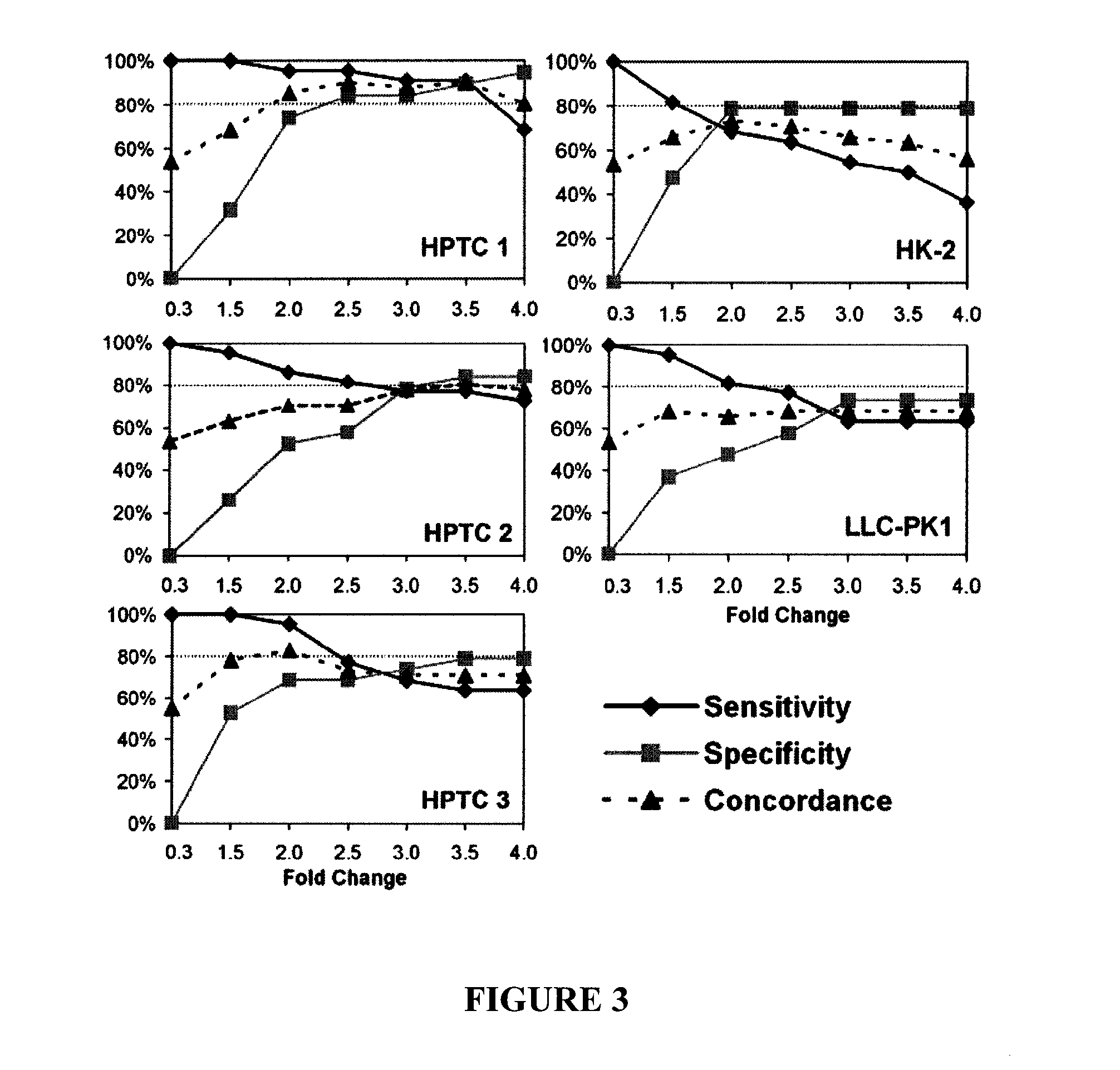In vitro assay for predicting renal proximal tubular cell toxicity
a renal proximal tubular cell and in vitro assay technology, applied in combinational chemistry, biochemistry apparatus and processes, chemical libraries, etc., can solve the problems of increased risks for patients and subjects enrolled in clinical trials, clinical complications, and often underestimated nephrotoxic potential, so as to save substantial costs and detect early
- Summary
- Abstract
- Description
- Claims
- Application Information
AI Technical Summary
Benefits of technology
Problems solved by technology
Method used
Image
Examples
example 1
[0101]This model for the prediction of human renal proximal tubule toxicity employed HPTC and the expression levels of interleukin (IL)-6 and IL-8 were used as endpoint. The model was evaluated with 41 well-characterized drugs and chemicals. The results revealed that the predictability of this model is high and is in the range of about 76%-85%.
[0102]Materials and Methods
[0103]Test Compounds:
[0104]41 compounds were tested. The nature of these compounds, as well as their classification into different groups, is shown in Table 1 (FIG. 9). Compounds 3-5, 8, 14, 18-20, 23, 30, 34 and 37 were obtained from Merck (Darmstadt, Germany). Compound 1 was purchased from PAA Laboratories GmbH (Pasching, Austria). Compound 10 was obtained from ChemService (West Chester, Pa., USA) and compound 22 was purchased from Tocris Bioscience (Bristol, UK). All other test compounds were purchased from Sigma-Aldrich (St. Louis, Mo., USA). Where possible stock solutions (10 mg / ml) of the test compounds were pr...
example 2
[0137]This experiment was performed using two types of renal proximal tubular-like cells, under conditions as described in Example 1 above, using the same identified 41 compounds. The two cell types were cell populations differentiated from human embryonic stem cells (HUES-7 cells available from Howard Hughes Medical Institute) and from human induced pluripotent cells, which were derived from human foreskin (iPS(foreskin)-4; WiCell Research Institute, Wisconsin, USA). Both stem cell types were differentiated into renal proximal tubular-like cells using a previously described method (see reference 27).
[0138]Results for selected compounds tested on both types of cell populations are shown in FIG. 28.
[0139]At threshold=3.5, both cell populations of renal proximal tubular-like cells showed >70% sensitivity and specificity and overall concordance with human clinical data, as seen in FIGS. 29 and 30. The major performance metrics of the assay using stem cell-derived renal proximal tubular...
PUM
| Property | Measurement | Unit |
|---|---|---|
| time | aaaaa | aaaaa |
| concentration | aaaaa | aaaaa |
| period of time | aaaaa | aaaaa |
Abstract
Description
Claims
Application Information
 Login to View More
Login to View More - R&D
- Intellectual Property
- Life Sciences
- Materials
- Tech Scout
- Unparalleled Data Quality
- Higher Quality Content
- 60% Fewer Hallucinations
Browse by: Latest US Patents, China's latest patents, Technical Efficacy Thesaurus, Application Domain, Technology Topic, Popular Technical Reports.
© 2025 PatSnap. All rights reserved.Legal|Privacy policy|Modern Slavery Act Transparency Statement|Sitemap|About US| Contact US: help@patsnap.com



